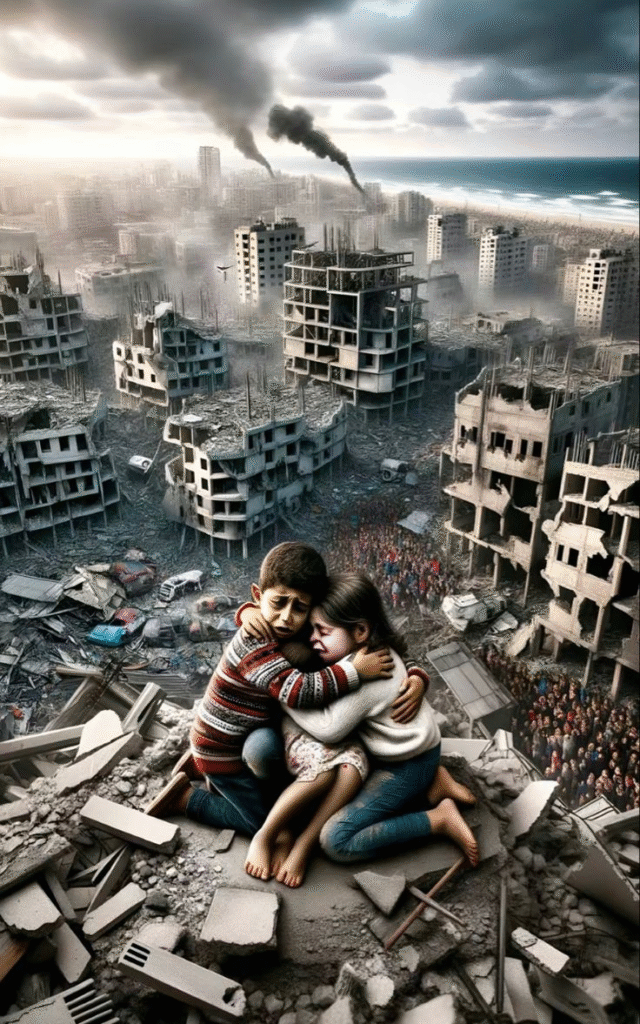
US President Joe Biden has unveiled a detailed three-phase ceasefire proposal aimed at ending the devastating Israel-Hamas conflict in Gaza. The plan, presented as an Israeli initiative, offers a potential path to halt the fighting, secure hostage releases, and surge vital aid into the besieged enclave. Its acceptance now hinges on Hamas, with global powers urging a deal to avert further bloodshed and regional instability impacting energy markets and security.
The Three-Phase Ceasefire Plan
The proposal, outlined by President Biden on May 31st (Source: White House transcript), includes:
- Phase 1 (6 weeks): Full ceasefire, Israeli withdrawal from populated Gaza areas, release of some hostages (women, elderly, wounded) in exchange for hundreds of Palestinian prisoners, surge in humanitarian aid.
- Phase 2: Permanent end to hostilities, release of all remaining living hostages (including male soldiers), full Israeli withdrawal from Gaza.
- Phase 3: Major multi-year reconstruction plan for Gaza, return of remaining deceased hostages’ bodies.
Hamas Response: Cautious Review

Hamas officials stated they received the proposal “positively” and are reviewing it seriously. Senior Hamas official Osama Hamdan emphasized the need for guarantees of a permanent ceasefire and full Israeli withdrawal (Source: Reuters). Previous negotiations have stalled over these core Hamas demands versus Israel’s goal of dismantling Hamas’s military capabilities.
Netanyahu’s Government Under Pressure
Israeli PM Benjamin Netanyahu faces intense internal division. Far-right coalition partners threaten to collapse the government if the war ends before Hamas is “destroyed.” Centrist ministers support the deal to free hostages. Netanyahu has publicly stated the war will continue until all objectives are met, casting some ambiguity on Israel’s full commitment despite US assurances.
Regional & Global Implications
A Gaza ceasefire is critical for:
- Regional Stability: Reducing risk of wider conflict with Hezbollah in Lebanon.
- Humanitarian Crisis: Allowing massive aid into Gaza where famine looms (UN agencies warn).
- Global Markets: Easing pressure on oil prices linked to Middle East tensions.
- India’s Interests: Impacts energy security, safety of Indian diaspora in the region, and broader West Asian stability crucial for trade and diplomacy.
Dire Humanitarian Situation in Gaza
The UN reports over 36,000 Palestinians killed (Gaza Health Ministry figures), widespread destruction, and a catastrophic lack of food, water, and medicine. Hospitals struggle to function. A ceasefire is urgently needed to prevent further mass casualties and allow meaningful aid delivery.
Path Ahead: Fragile Hope

Qatar and Egypt are actively mediating between Hamas and Israel. While the Biden proposal offers the most detailed path forward in months, significant hurdles remain:
- Hamas seeks explicit guarantees on permanent ceasefire/withdrawal.
- Netanyahu must manage his fractious coalition.
- Trust between the warring parties is virtually nonexistent.
- Implementation mechanisms and monitoring are complex.
Summary: President Biden’s three-phase ceasefire proposal presents a potential breakthrough to end the Gaza war, secure hostage releases, and initiate massive aid delivery. While Hamas reviews the plan “positively,” demanding guarantees, and Netanyahu faces intense domestic pressure, the coming days are critical. Global powers, including India with significant regional stakes, are urging acceptance to alleviate immense human suffering and reduce the risk of wider conflict.
Biden unveils 3-phase Gaza ceasefire plan. Hamas reviewing deal for hostage swap & aid surge. Will Netanyahu agree? Crucial implications for region & world. #Ceasefire #Gaza #IsraelHamasWar
No responses yet